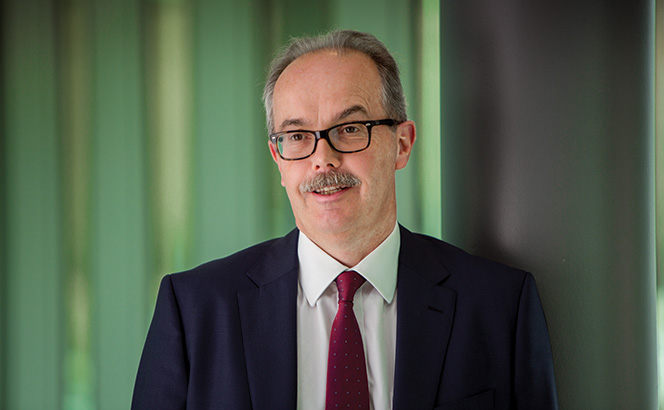Marco Cillario assesses whether Nextlaw is a network or Dentonsʼ Uber
With typical distaste for the status quo, Dentons chair Joe Andrew last year described the launch of Nextlaw Global Referral Network as the beginning of the end for traditional law firm networks. The new platform, conceived and paid for by Dentons, differed from other networks in not charging membership fees and being open to any number of members globally.
According to Dentons’ pitch, this meant clients would be referred to the right law firm in each jurisdiction rather than one with paid-for territorial exclusivity. Members have access to an online portal where they can search for a firm based on practice area, expertise and location. Following an algorithm, the search engine lists firms and lawyers matching the criteria and ranks them based on feedback and level of activity within the network.
The platform launched in October 2016 with an initial group of 291, mainly firms Dentons was already working with. One partner at one of the members recalls: ‘Dentons contacted us. They said: “You automatically qualify”, so we said: “Why not?” We submitted the application form and it was accepted.’
One year later, the number of members has increased to 520, including more than 26,000 lawyers in 195 countries – the largest network by number of lawyers. Of the few firms to go public, there are some substantial practices in the group, among them Scotland’s Brodies and Spain’s Gómez-Acebo & Pombo.
Applications are reviewed by a committee made up of Dentons’ regional chief executives. Nextlaw chief executive Jeff Modisett says about 20% have been rejected since its launch, largely for not having enough relevant experience.
‘Dentons put a list of firms on the internet, they don’t know each other. It is a pale shadow of the existing networks.’
Manager of a law firm network
Unsurprisingly, conventional networks give short shrift to Nextlaw, arguing their model has far more engagement. ‘Just because there are membership fees does not mean the quality is affected or firms refer work to someone who cannot do it: suggesting that is absurd,’ says RPC partner Tim Brown (pictured), also chair-elect and executive vice-chair of TerraLex, which has 155 member firms.
Leaders of other networks such as Lex Mundi (160 members) and Interlaw (80 members) agree that fees, normally tailored to a member’s size, are used to pay for the organisations’ permanent staff, the training of members and marketing operations.
Despite Dentons’ broadside there has been considerable momentum behind networks in recent years, defying earlier expectations that global law firms would outmode them. Says Arnecke Sibeth partner and Interlaw president Michael Siebold: ‘The relationship I have with other member firms is such that I don’t just send work to them: I pick up the phone and ask them if they are confident in doing the work. If not, they know the market so I can rely on them in finding me the right firm.’
Management of traditional networks make a point of visiting prospective members’ offices and meeting partners as part of the selection process. Once admitted, members are required to send representatives to (and pay for) a regional and global conference every year.
Says Jamie Baker, partner at Lex Mundi member Baker Botts: ‘This is a people business, and meeting people helps you have a confidence in them.’ One manager of a law firm network argues that Dentons put ‘a list of firms on the internet, they don’t know each other. It is a pale shadow of the existing networks.’
While Nextlaw has almost doubled its membership since launch, this has not significantly affected the other operators, with eight of Nextlaw’s 19 largest firms also members of other networks (see box). ‘We don’t see Nextlaw and Lex Mundi as competitors,’ says Walkers partner Ramesh Maharaj, whose firm is using Nextlaw largely as a means to exchange referrals with Dentons.
But one of the firms in the top 19 did drop its membership of a paid-for network for Nextlaw. The firm’s spokesperson noted: ‘We were not willing to pay because our reason for being a member is not the revenue stream: it is the extension of our clients’ service.’
In many ways, however, the public spat between Dentons and the networks is a red herring. Nextlaw is broadly akin to an attempt to create an Uber or specialist search engine – an online platform that gains power through widespread adoption. Nextlaw succeeds if it secures a huge pool of users, even if individual relationships are shallow.
Whether it is succeeding is currently impossible to say. While membership has swelled, Dentons is coy about the number of referrals going through the group. But rivals well beyond the referral clubs may want to keep an eye on its progress.
marco.cillario@legalease.co.uk
Nextlaw public members
There are 19 Nextlaw members with 190+ lawyers – 14 of them have agreed to go public. Eight of these are also members of other networks.
| Firm | Also a member of |
|---|---|
| Appleby | Lex Mundi |
| Eckert Seamans | |
| J Sagar Associates | |
| Brodies | TerraLex |
| Gómez-Acebo & Pombo | Interlaw |
| Walkers | Lex Mundi |
| PLMJ | World Services Group |
| Lindsays | |
| Thomson Snell & Passmore | |
| Sorainen | |
| Vieira de Almeida & Associados | TerraLex |
| Thompson Dorfman Sweatman | Lex Mundi |
| Bingham Greenebaum Doll | TerraLex |
| Ogier |

